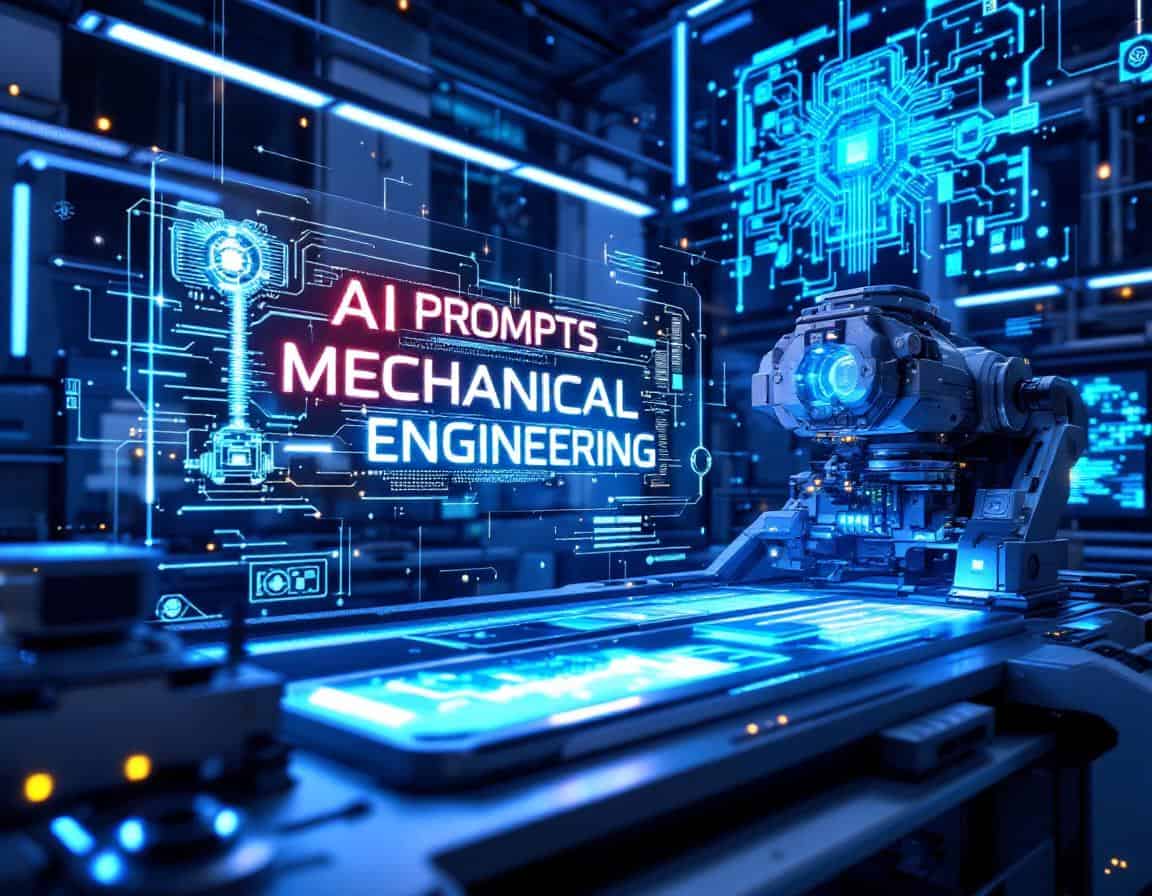
Online-KI-Tools verändern den Maschinenbau rapide, indem sie die menschlichen Fähigkeiten in den Bereichen Konstruktion und Analyse ergänzen, Herstellungund Wartung. Diese KI-Systeme können riesige Datenmengen verarbeiten, komplexe Muster erkennen und neue Lösungen viel schneller als herkömmliche Methoden entwickeln. So kann KI Sie beispielsweise bei der Optimierung von Konstruktionen im Hinblick auf Leistung und Herstellbarkeit unterstützen, komplexe Simulationen beschleunigen, Materialeigenschaften vorhersagen und eine Vielzahl von Analyseaufgaben automatisieren.
Die nachstehenden Hinweise helfen zum Beispiel bei der generativen Konstruktion, beschleunigen Simulationen (FEA/CFD), helfen bei der vorausschauenden Wartung, bei der KI Sensordaten von Maschinen analysiert, um potenzielle Ausfälle vorherzusagen, ermöglichen eine proaktive Wartung und minimieren Ausfallzeiten, helfen bei der Materialauswahl und vieles mehr.
- Diese Seite ist spezifisch für eine Domain. Bei Bedarf können Sie in unserer > Suchmaschine nach allen Domains und allen Kriterien suchen. AI Prompts Verzeichnis <, gewidmet dem Produktdesign Und Innovation.
- Angesichts der Server-Ressourcen und des Zeitaufwands sind die Eingabeaufforderungen selbst nur registrierten Mitgliedern vorbehalten und unten nicht sichtbar, wenn Sie nicht angemeldet sind. Sie können sich registrieren, 100% kostenlos:
Mitgliedschaft erforderlich
Sie müssen Mitglied sein, um auf diesen Inhalt zugreifen zu können.



























Gehen wir davon aus, dass KI im Maschinenbau immer die besten Prompts generieren kann? Wie werden diese im Übrigen generiert?
Wird die KI menschliche Ingenieure überflüssig machen?
Verwandte Artikel
Ergonomische Arbeitsplatzbewertung
Engineering Change Order (ECO): Best Practices zur Minimierung von Störungen und Kosten
Vom Labor auf den Markt: Die Rolle der Pilotproduktion
45+ weitere Tricks der Kognitionswissenschaft für Spiele und Marketing: Psychologische und Engagement
Über 45 Tricks der Kognitionswissenschaft für Spiele und Marketing: Psychologische und Engagement-bezogene
Neueste Veröffentlichungen und Patente zu Zeolithen